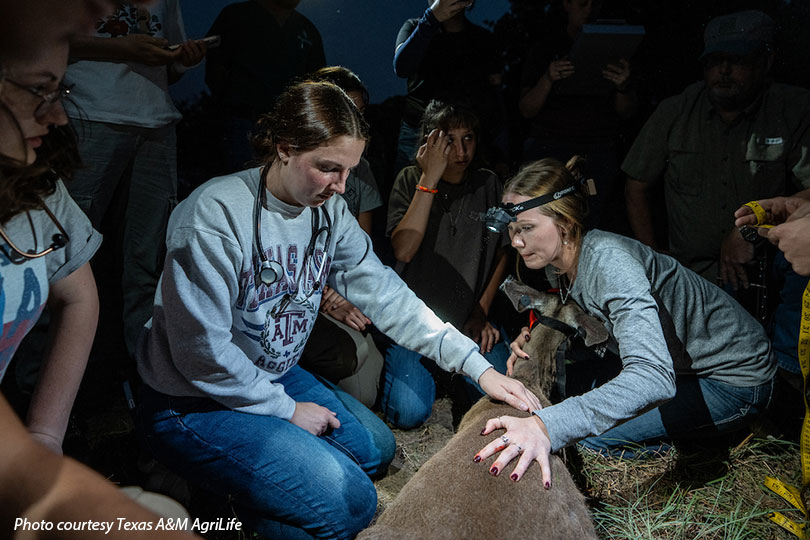A new research initiative launched in fall 2024 by the Texas A&M Department of Rangeland, Wildlife and Fisheries Management is contributing to a greater understanding of white-tailed deer biology and ecology through systematic field data collection.
The study is based at the Texas A&M Ecology and Natural Resources Teaching Area, a 945-acre low-fenced biological station near campus.
Undergraduate and graduate students in the program use drop nets to safely capture white-tailed deer to collect biological and morphological data. Each deer is marked with an ear tag and some are fitted with GPS collars before being released back into their habitat.
These efforts help researchers assess population dynamics, habitat use, nutrition and overall herd health, according to Dr. Marcus Blum, assistant professor and AgriLife Extension wildlife specialist.
“Our goal is to collect as much data as we can while minimizing stress to the animal,” Blum said. “This data will then be made available to student researchers to analyze and gain a greater understanding of deer behavior and landscape preferences. In the long run, it will benefit students, deer populations and land managers.”
Although the study area centers on the 945-acre low-fenced biological field station near campus, its impact extends much further. Findings will support conservation and management strategies for white-tailed deer across the Post Oak Savannah ecoregion, an area where movement-based studies remain limited.
“Although movement-based studies are beneficial to proper management of white-tailed deer habitat, few have occurred within the Post Oak Savannah,” Blum said. “The data and analyses produced by this course will provide valuable insight for landowners and biologists managing white-tailed deer within the ecoregion.”
The project puts emphasis on educational opportunities for undergraduate and graduate students who assist with data collection in the field. By participating directly in the research process, the students gain experience that complements classroom instruction while contributing to the research effort
Blum hopes to grow the program and its contributions to science, students and wildlife management.
“Providing experiential learning opportunities that prepare students for their careers is key to achieving the land-grant mission,” Blum said. “Overall, our goal for this project is to connect the theories and concepts taught in the classroom with on-the-ground application.”


Leave A Comment